
Think you've bagged a bargain break?
Before you get too excited and start throwing your finest holiday clobber into a suitcase, there are a few hidden costs you might want to be aware of.
We've all been there. Smugly booking what appears to be the deal of the century, only to find yourself drowning in a sea of unexpected charges.
The phrase "too good to be true" springs to mind.
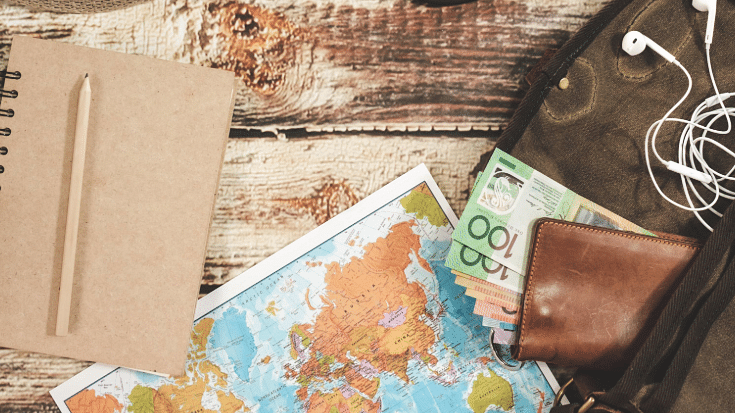
Adobe Free Stock / Tony
With holiday costs soaring, we decided to investigate just how much these sneaky extras are really costing us.
From tourist taxes that appear out of nowhere to airport transfers that cost more than your actual flight, hidden fees can pile up quickly.
Ready to discover which destinations are secretly pickpocketing holidaymakers?
The Destinations That are Costing Holidaymakers the Most in Hidden Fees
At Airalo, we've analysed data from destinations across the globe to find out exactly where your hard-earned cash is disappearing to.
But before we dive into the details, here are a few of the headlines surrounding those pesky hidden costs.
- On average, holidaymakers are spending an additional £109 on hidden costs when travelling abroad.
- Poland is the most affordable travel destination in the world, with the lowest hidden costs.
- Hidden holiday costs are highest in the Caribbean, with Speightstown ranking as the most expensive destination globally.
- The largest hidden cost is the cost of eating abroad, with an average meal for two costing £46.18.
- The average cost of a return airport transfer is nearly £80.
- Holidaymakers are spending an average of £6.13 a day on data roaming alone.
The Holiday Destinations With the Most (and Least) Expensive Hidden Fees
Our research reveals a stark divide between destinations when it comes to hidden costs.
We've put together a map that combines all the major hidden costs, from tourist taxes to airport transfers, so you can see exactly which places go easy on your wallet and which ones seem determined to empty it.
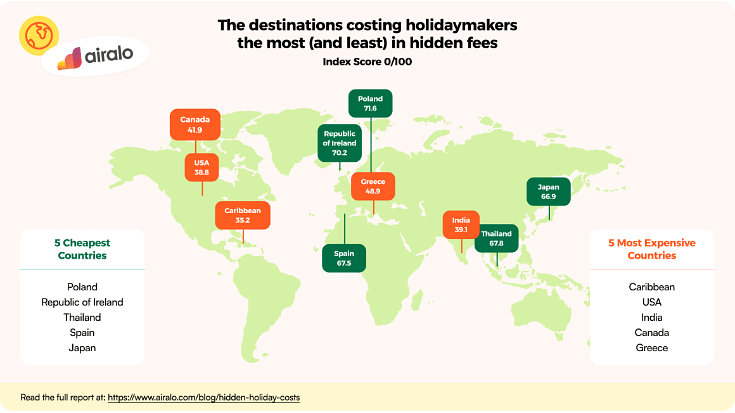
Poland is the Cheapest Place to Visit
Who knew that Poland would emerge as the unlikely hero of budget travel?
The country dominates our affordability rankings, with Polish cities claiming not just the top spot but the entire top five.
Lodz takes the crown as the most budget-friendly destination globally, followed by Poznan, Warsaw, Turon and Wroclaw.
The numbers speak for themselves. In Lodz, Poznan and Wroclaw, the tourist tax is a glorious £0.00.
Compare that to the average tourist tax of £0.22 per night and you're already winning.
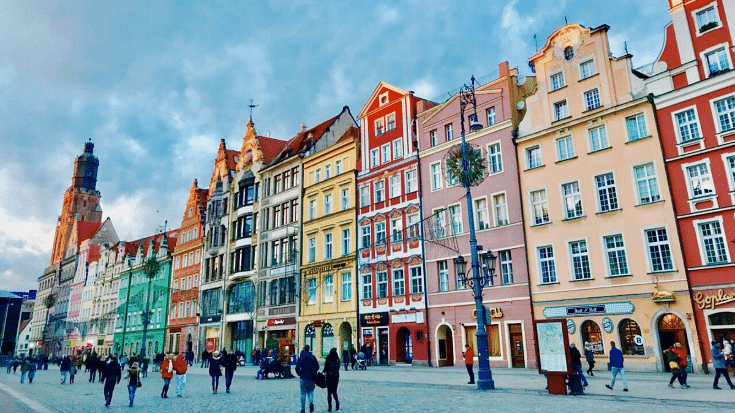
Unsplash / Reiseuhu
Need to get around? The average taxi fare is just £1.67 - less than your morning coffee.
Even when it comes to staying connected, the average daily data roaming fee in Poland is £3.86, one of the lowest in the world.
It's almost as if Poland is actively trying to make travel affordable. Revolutionary concept, we know.
The Republic of Ireland Makes the Top 10 Cheapest Holiday Destinations

Adobe Free Stock / Bruno Biancardi
Our neighbours across the Irish Sea are clearly doing something right. Ireland has secured two spots in the top ten most affordable destinations.
Galway claims 7th place while Cork sneaks into tenth - proof that the luck of the Irish extends beyond the four-leaf clover.
Tourists visiting Ireland's biggest cities - whether it's Galway, Cork, Dublin, Dingle or Kilkenny - can expect to pay precisely nothing for tourist tax, data roaming fees or visa costs.
Spain Ranks Among the Top 20 Most Affordable Holiday Destinations When it Comes to Hidden Costs

Adobe Free Stock / unai
It might come as a surprise, given its popularity as a tourist attraction, but Spain secures a respectable 15th place in our affordability index.
With average additional fees of £84.48, it comes in well below the £109 average.
Granada emerges as Spain's budget champion, with hidden fees averaging just £63.66.
That leaves you with plenty left over for paella and Estrella.
One factor contributing to Spain's ranking is its low daily data roaming fees, which are 59% cheaper than the global average.
If you're travelling to Spain, a Spanish eSIM from Airalo could save you a further £23.52 for a week's stay.
Holiday Hidden Costs are the Highest in The Caribbean
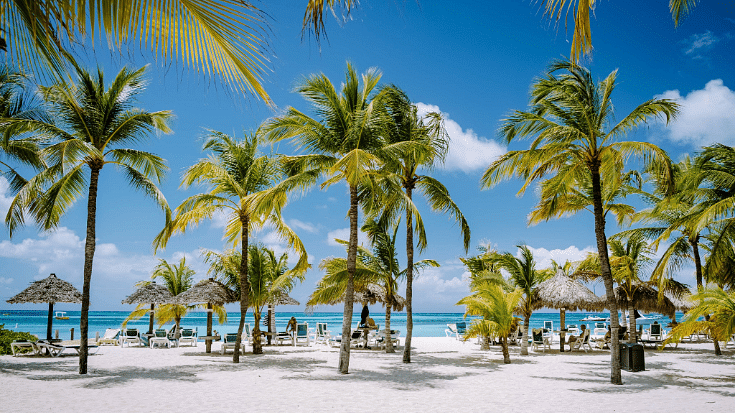
Adobe Free Stock / Fokke Baarssen
Now for the less cheerful news.
The Caribbean, while undeniably beautiful, seems to have missed the memo about affordable travel.
Speightstown in Barbados takes the dubious honour of being the world's most expensive destination for hidden costs.
Bridgetown follows closely behind, trailing like an overpriced shadow.
The Caribbean's eye-watering costs become clearer when you break them down. The average tourist tax is £5.56 per night.
Many Caribbean destinations require visas, adding £22.00 for Havana, £15.64 for San Juan and £14.83 for Aruba.

Adobe Free Stock / Fokke Baarssen
Daily roaming charges average £8.50, enough to make you seriously consider a digital detox holiday.
When you add up all the hidden costs of visiting the Caribbean, it can end up totalling over £160.
So, if you consider that a week-long trip to Speightstown from London costs approximately £603 (according to Google Explore), you're looking at a nearly 27% increase on your holiday budget.
If you're determined to visit paradise, then a Caribbean Islands eSIM gives you a much-needed head start when tackling those roaming charges.
It also allows you to do more research upfront on things like affordable restaurants and cost-effective travel options without being charged for excess roaming, helping you save even more money.
Holidaymakers Could Be Spending an Additional £109 on Hidden Costs When Abroad
The average sum of hidden costs across all destinations is £109.01. That's more than many people spend on their entire weekly shop, vanishing into the ether of "additional fees".
Here's how that £109 breaks down.
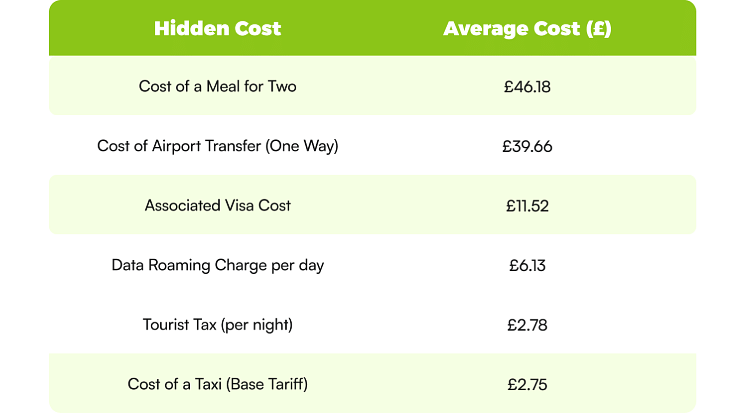
Eating Out is the Biggest Cost When Abroad and Can be Full of Hidden Extras
At £46.18 for a meal for two, dining out abroad is the biggest drain on your holiday budget.
That could get you a whole week's worth of groceries back home.
And the variation in eating out costs between destinations is staggering.
From £6.43 in Varanasi, India (where you could practically eat like royalty for a tenner) to an eye-watering £146.74 in Nassau, the Caribbean.

Hidden Costs that May Creep Onto Your Food Bill
In many holiday destinations, surprise extras can sneak onto your bill when you're just trying to enjoy your dinner.
Whether it's taxes that don't show up until the receipt arrives or tipping cultures that confuse first-time visitors, dining out abroad can come with a few wallet-shock moments.
Here are some of the sneakiest charges to watch out for when eating out around the world.
USA and Canada: Tax + Tip = Surprise Total
In both countries, the prices you see on the menu don't include sales tax or tips.
Once you add those on, your $50 (£38) meal for two can easily come in at more like $65 (£49).
There is also a sales tax that isn't necessarily declared on menus or upfront, as it's so commonplace. This will usually be around 6 to 10%, depending on the state or province.
And when it comes to tipping, 20% or more is the norm, especially in cities or anywhere with table service.
So, when you're eating out in these countries, a good of thumb is to add 30% to menu prices. This will be closer to what you'll be presented with on the bill when you're finished.
France: The 'Terrasse' Uplift

Adobe Free Stock / Davide Angelini
Thinking of people-watching over a glass of wine in Paris? That might cost you extra.
Some French cafés charge more for terrace seating and it’s not always clearly marked. You might even find two separate price lists: one for inside, and one for outside.
To avoid any surprise charges, it's perfectly acceptable to ask when being seated if there is a charge for the terrace.
Italy: The Coperto Curveball
In Italy, many restaurants add a 'coperto', or cover charge, to your bill.
Supposedly covering things like bread and table service, the charge is usually between €1 and 3 per person (90p - £2.60).
Unfortunately, it's a mandatory charge in most establishments and although it's legally required to be advertised, it's often tucked away in the small print.
In some popular and busy spots, a service charge is also added on top of the coperto.
Asking whether a restaurant charges a caperto is fine and a smart move. You could say:
- “C’è il coperto?” (Is there a cover charge?)
- Or in English: "Just checking - is there a coperto here?"
It's not considered rude, it's just practical.
Locals ask too, especially in popular cities like Rome, Venice or Florence. In these places, a coperto and a service charge can really stack up.
Spain: Surprise Starters

Adobe Free Stock / LIGHTFIELD STUDIOS
Spain doesn't have tipping built into its culture.
But some restaurants in popular areas will quietly add charges for bread, olives or tap water without asking.
It's perfectly fine to say "No gracias" when they arrive.
If you don't touch them, you won't be charged. Even better is to ask when ordering if the bread and/or olives are free or not.
What to say:
- "¿Esto está incluido?" - Is this included?
- "No lo hemos pedido." - We didn't order this.
In big cities and tourist hotspots like Barcelona or Ibiza, restaurants may not include VAT (currently at 10% and known in Spain as IVA tax), on their menu prices.
Always check the small print. Menus should state "IVA incluido" (VAT included). If not, expect a surprise 10% added to the bill.
Tip: Look for 'IVA incluido' on the menu. If it's not there, assume it isn't.
Japan: Sometimes Sitting in Isn't Free
Japan famously has no tipping, but some places, especially izakayas, charge an otoshi, which is essentially a seating fee.
Usually coming in at around ¥300–500 (about £2 - £3), it can surprise first-time visitors.
So it's best to bear it in mind to avoid question marks around your bill.

Adobe Free Stock / Drobot Dean
Final Tips: Avoiding Hidden Dining Costs Abroad
Always check the fine print on the menu or ask before you order.
A scenic view, a seat outside, or an unsolicited bread basket could add more to your bill than you bargained for.
Holidays are for indulgence, but knowing about these little quirks means you can treat yourself without feeling cheated when the bill arrives.
The Average Cost of a Return Airport Transfer is Nearly £80
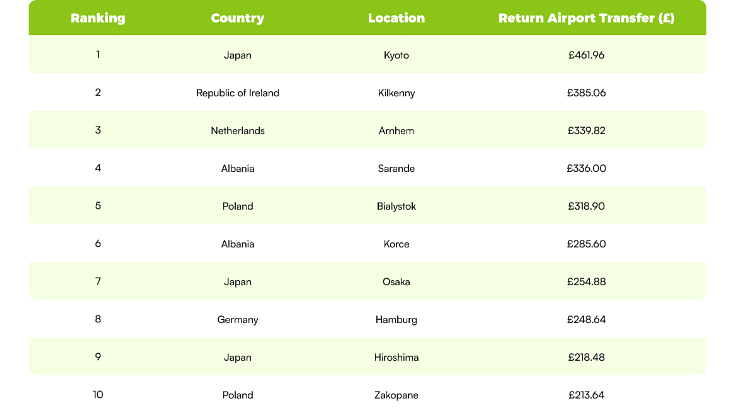
Double that one-way transfer cost of £39.66 and you're looking at nearly £80 for return airport transfers.
Some destinations take airport transfer pricing to truly spectacular levels.
Kyoto in Japan tops our most expensive list at £461.96 for a return transfer.
To put that into perspective, consider the fact that a week-long trip to Kyoto from London costs approximately £648, according to Google Explore.
Add that transfer cost and you're looking at a 71% increase on your holiday budget just for the privilege of getting to and from the airport.
Tourist Tax is Costing Holidaymakers on Average £19.46+ for a Week Abroad
Tourist tax is a small, often nightly fee that travellers pay when staying in certain European destinations.
It's usually added to your hotel, hostel or Airbnb bill.
Charged per person, per night, the amount varies depending on the city, accommodation type and sometimes even the season.
Popular holiday spots like Rome, Barcelona, Paris and Dubrovnik all apply tourist tax.
And in most cases, you'll pay it directly at check-in or check-out.
The money goes towards maintaining local infrastructure, tourism facilities and environmental preservation.
It basically helps to maintain your holiday destinations and contributes towards responsible tourism.
But what if you're travelling on a shoestring with lower-key and emerging destinations on your itinerary?
In this case, it pays to be aware of locations where tourist tax is rising steeply in a short space of time or where it may realistically impact your budget.
The Places Where Tourist Tax Has Increased the Most in the Last Year
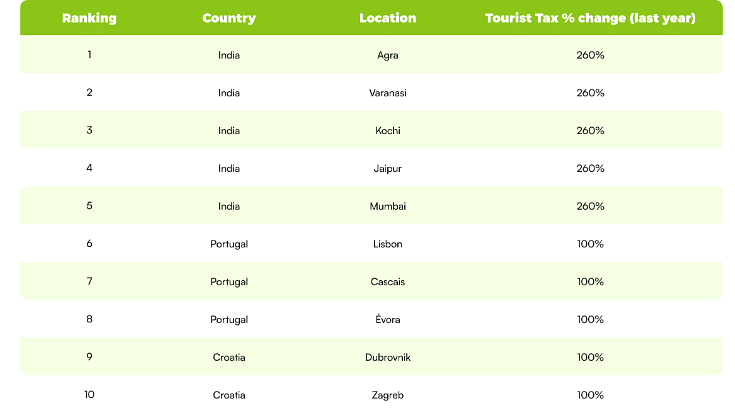
Based on a seven-night stay, tourist tax can add £20 or more to your holiday (or up to 10% of your total holiday cost in some cases).
Some destinations calculate this as a flat rate per night, others as a percentage of your accommodation cost.
Either way, it's another hidden cost to add to your holiday total.
The countries that have increased tourist tax the most in the past year read like a roll call of popular destinations suddenly realising they can charge more.
India leads the pack with a 260% increase across multiple cities, while Portugal and Croatia have doubled their rates.
Holidaymakers are Spending on Average £6.13 a Day on Data Roaming

At £6.13 per day, data roaming charges soon add up.
Over a week-long holiday, that's more than £40 just for the privilege of checking your emails and posting photos captioned "Had worse Mondays".
The most expensive destinations to data roam include culturally rich Saudi Arabia, vibrant Morocco and India, all of which top the charts at £8.90 per day.
For more insights into managing data costs abroad, check out our comprehensive traveller's guide to data roaming.
Top Tips to Reduce Data Roaming Costs Abroad

Here's where Airalo swoops in like a budget-conscious superhero.
While we can't do much about airport transfers or tourist taxes, Airalo can definitely help you tackle those data roaming charges.
An eSIM from Airalo can save you significant money compared to traditional roaming charges.
For destinations where you might pay £8.90 daily for roaming (of which there are plenty), an eSIM can reduce costs massively.
Over a week-long trip, there's potential to save over £40 - enough for a nice meal for two in many places, as we've seen.
Another great way to control your data costs is to switch data off completely while you're not using it.
Here's how to turn off data roaming:
- For iPhone users: Go to Settings > Cellular > Cellular Data Options > Data Roaming and switch it off.
- For Android users: Go to Settings > Network & Internet > Mobile Network > Data Roaming and disable it.
Of course, turning off roaming entirely means losing connectivity, which is where eSIMs come in handy.
Whether you're heading to Japan, exploring Europe, or island-hopping in the Caribbean, there's an eSIM option for every destination.
The hidden costs of holidays might be unavoidable, but at least your data charges don't have to be.
Because the only thing worse than paying £109 in hidden fees is realising you could have saved a large chunk of that before you even got on the plane.
Want to avoid one of the most common hidden travel costs? A local eSIM from Airalo can save you over £40 a week on roaming fees.
FAQs - The Hidden Costs of Holidays
1. What are The Most Common Hidden Costs When Travelling Abroad?
The most significant hidden costs holidaymakers face are the costs of eating out, followed by airport transfers, tourist taxes and data roaming charges. According to Airalo's research, holidaymakers spend an average of an additional £109 on these hidden fees.
2. Which Holiday Destinations Have the Highest Hidden Fees?
The Caribbean islands have the highest hidden fees globally. Speightstown, Barbados, is named the most expensive destination, with hidden costs potentially totalling over £160 for a week-long trip. This is due to high tourist taxes (averaging £5.56 per night), visa requirements and expensive daily data roaming charges (averaging £8.50).
3. What are the Cheapest Countries to Visit With the Lowest Hidden Costs?
Poland is the most affordable travel destination, dominating the top five spots for the lowest hidden costs. Cities like Lodz, Poznan and Warsaw have a tourist tax of £0.00 and the average taxi fare is just £1.67. Ireland also ranks in the top ten, with Galway and Cork being particularly affordable due to the absence of tourist tax and other fees.
4. How Can I Save Money on Data Roaming Fees While on Holiday?
You can save a significant amount on data roaming by using an eSIM from Airalo, which can reduce costs massively compared to traditional roaming charges. Over one week, this could save you more than £40. Another option is to simply switch off data roaming on your phone when you're not using it.
5. How Much Does Tourist Tax Cost and What Does it Pay For?
Tourist tax is a small, often nightly fee for staying in certain destinations, typically added to your accommodation bill. It can add an average of £19.46 to a seven-night stay. But in some places, it can increase your holiday costs by up to 10%. The funds collected from tourist tax are used to maintain local infrastructure, tourism facilities and for environmental preservation.
Methodology
Using a wide variety of sources, ranging from government information to airport websites, we have identified the hidden costs when travelling around the world and what areas are most expensive.
We looked for Tourist Tax, Data Roaming charges, Taxi base rate, cost of travel from airport to city, the cost of a meal out for two, currency exchange rate, holiday visa/application to travel cost and average amount to tip.
Using these, we created a weighted rank to pull out which areas are the most expensive and which are the cheapest.



